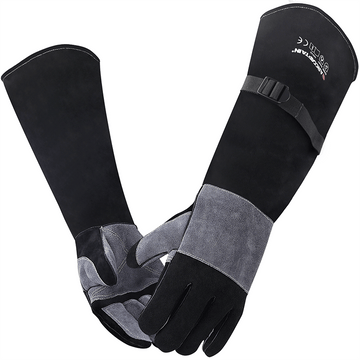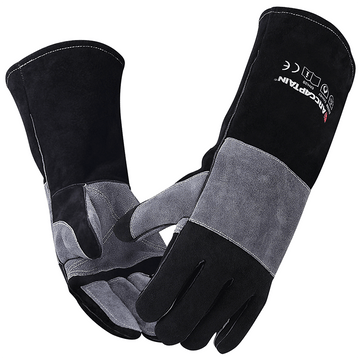Stick Welding Gloves
- Featured
- Best selling
- Alphabetically, A-Z
- Alphabetically, Z-A
- Price, low to high
- Price, high to low
- Date, old to new
- Date, new to old
Forge ahead with confidence on your next welding challenge with ArcCaptain's collection of stick welding gloves. These gloves are specifically tailored to meet the demands of welding, providing both seasoned artisans and enthusiastic beginners with impeccable power and precision.
Known for their robust design and exceptional hand protection, our welding gloves ensure that each of your projects is completed with the utmost strength and quality.
Remember, outfitting yourself for welding involves more than just gloves. Explore our comprehensive welding protective gear, durable gloves, and sophisticated welding helmets to guarantee you're prepared for any task at hand.
Stick Welding Gloves That Work As Hard As You Do
Here's why our stick welding gloves are the ideal choice:
Heat and Fire Resistance
Made from flame-resistant split cowhide, our gloves offer excellent protection, capable of withstanding temperatures up to 662°F.
Don't miss our top-of-the-line MIG welders for a complete and efficient welding setup.
Durable and Reliable
Our gloves feature reinforced seams and double stitching, enhancing abrasion resistance and longevity, while maintaining flexibility.
Looking for precision in welding? Check out our selection of TIG welders for accuracy and control.
Comfort and Sensitivity
Lined with soft insulated cotton and a straight thumb design, our gloves provide comfort and fingertip sensitivity for precise control.
Extended Coverage
With a 16-inch extra-long sleeve and oversized cuff, our gloves protect your forearms from sparks and slag, fitting most users comfortably.
For added safety, wrap up with a welding cap to shield your scalp and hair.
Versatile Use
Suited for multiple applications, our gloves are not just for welding but also for tasks requiring heat resistance, like handling hot cookware or animal care.
ArcCaptain stands for unparalleled welding safety, with stick welding gloves as a testament to our commitment. Explore our collection for a blend of advanced protection, functionality, and lasting quality.
Related Articles To Read
- Welding Eye Injury Prevention: Tips and Best Practices
- Safety Equipment in Welding: 8 Must-Have PPE for Welders
Frequently Asked Questions
Do welding gloves protect against shock?
Welding gloves are primarily designed to protect against heat, sparks, and spatter but are not intended for electrical insulation. Some welding gloves may offer minimal protection against electric shock, but they should not be relied upon as the primary means of electrical safety.
For full protection against electric shock, additional measures such as using dry gloves and insulating mats should be employed.
How do you break in stick welding gloves?
To break in stick welding gloves, start by wearing them for short periods during light tasks to allow the leather to adapt to the shape of your hands.
Gently bending and flexing the fingers can help soften the material. Some welders may apply a leather conditioner to make them more pliable, but it's essential to ensure that any product used does not compromise the gloves' heat resistance.
What happens if you don't wear welding gloves?
Not wearing welding gloves exposes you to a high risk of burns from hot metals, sparks, and spatter as well as cuts and abrasions. Prolonged exposure to UV radiation from the welding arc can also lead to skin damage. Welding without proper gloves can result in serious and painful injuries, and in some cases, long-term damage to the hands and skin.
When should you replace welding gloves?
Welding gloves should be replaced when they show signs of significant wear, such as holes, thinning, tears, or excessive stiffness, which can compromise their protective capabilities.
Additionally, if there is any indication of burns or melted areas that could reduce heat resistance or if they no longer fit correctly, it's time for a new pair to ensure continued protection.


